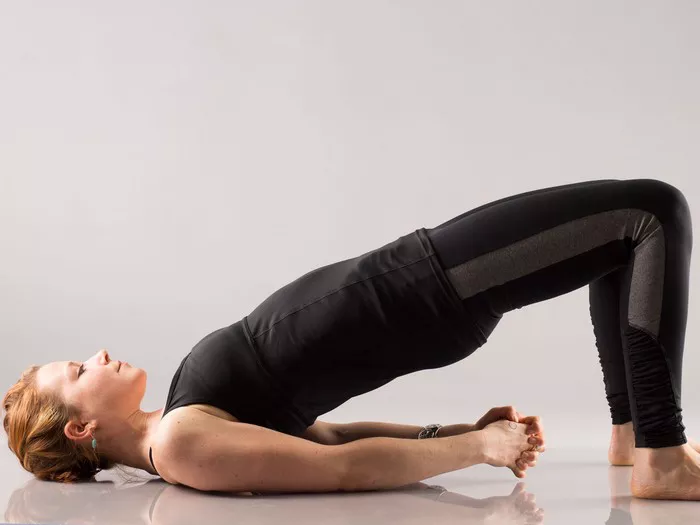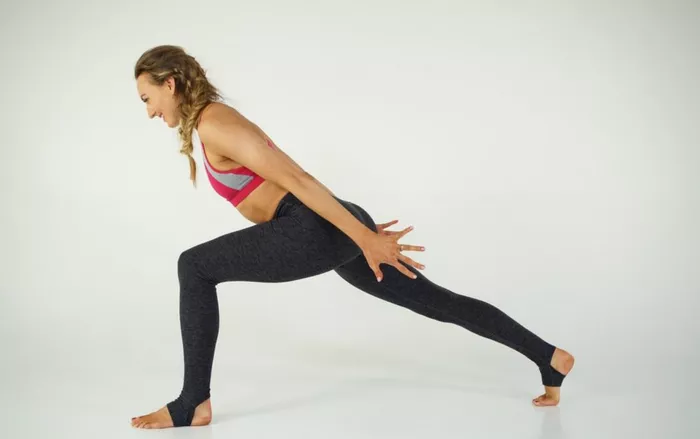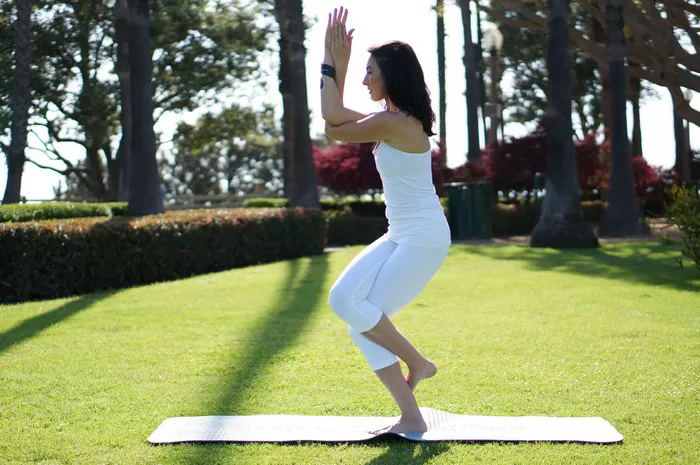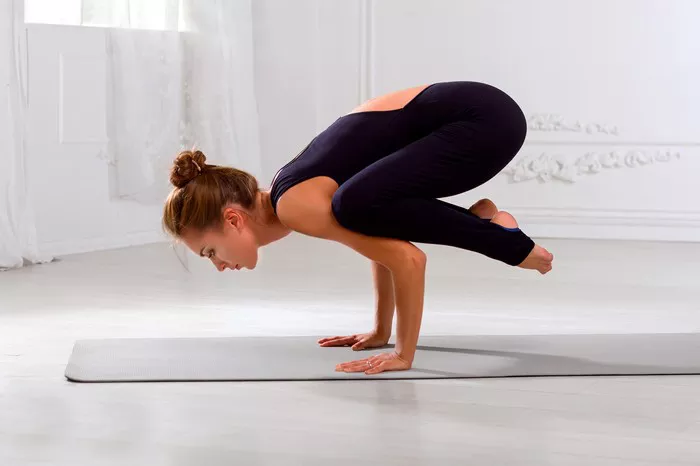In the vast landscape of yoga asanas, or poses, Bridge Pose stands out as a transformative posture that offers a multitude of physical, mental, and emotional benefits. Rooted in ancient yoga tradition, Bridge Pose, or Setu Bandhasana in Sanskrit, derives its name from the shape it creates – a sturdy bridge connecting the practitioner’s body to a deeper state of well-being. This article serves as a comprehensive exploration of Bridge Pose, delving into its origins, the proper alignment and technique, its therapeutic applications, and how to incorporate it into a balanced yoga practice.
Origins and Symbolism
Bridge Pose has been practiced for centuries and holds significant symbolism within the yogic tradition. In Sanskrit, “setu” means bridge, and “bandha” means lock or bound. The posture is often interpreted as a bridge between the physical body and the subtle energy channels, known as nadis, as well as a bridge between the conscious and unconscious aspects of the mind.
Ancient yogic texts, such as the Hatha Yoga Pradipika and the Yoga Sutras of Patanjali, make references to postures resembling Bridge Pose, highlighting its importance in the quest for physical vitality and spiritual enlightenment. Symbolically, the act of bridging represents the practitioner’s journey towards unity and balance, both internally and externally.
Physical Technique and Alignment
To practice Bridge Pose effectively, it’s essential to understand the proper technique and alignment cues. Begin by lying flat on your back, arms resting alongside your body with palms facing down. Bend your knees and place your feet hip-width apart, ensuring they are parallel to each other and close to your sitting bones.
As you inhale, press into your feet and lift your hips towards the ceiling, engaging your glutes and thighs. Keep your knees aligned over your ankles, avoiding any splaying outward. Roll your shoulders underneath you, interlacing your fingers and pressing your arms into the mat for support.
In the fully expressed pose, your body forms a gentle arc, with your chest reaching towards your chin and your chin slightly away from your chest to maintain length in the neck. Ensure that there is no compression in the lower back, and if needed, you can place a folded blanket or yoga block beneath your sacrum for support.
Benefits for the Body
Bridge Pose offers a plethora of physical benefits, making it a staple in yoga classes and therapeutic settings alike. Some of the key advantages include:
1. Strengthens the Back: Bridge Pose targets the muscles along the spine, including the erector spinae and multifidus, helping to improve spinal health and alleviate discomfort associated with sedentary lifestyles or poor posture.
2. Stretches the Chest and Shoulders: As the chest lifts towards the chin, Bridge Pose opens up the front body, stretching the pectoral muscles and releasing tension in the shoulders and upper back.
3. Engages the Core: The act of lifting the hips engages the abdominal muscles, particularly the transverse abdominis and rectus abdominis, contributing to core stability and enhancing overall posture.
4. Stimulates the Thyroid Gland: The gentle compression of the throat in Bridge Pose stimulates the thyroid gland, which plays a crucial role in metabolism and energy regulation.
5. Improves Circulation: By elevating the hips above the heart, Bridge Pose encourages blood flow to the brain, promoting mental clarity and reducing feelings of fatigue.
6. Relieves Mild Anxiety and Depression: The gentle inversion in Bridge Pose can have a calming effect on the nervous system, helping to alleviate symptoms of stress, anxiety, and mild depression.
7. Prepares the Body for More Advanced Postures: Bridge Pose serves as an excellent preparatory pose for deeper backbends, such as Wheel Pose (Urdhva Dhanurasana), by warming up the spine and opening the chest and shoulders.
Therapeutic Applications
Beyond its physical benefits, Bridge Pose is valued for its therapeutic applications in managing various health conditions and injuries. Yoga therapists and healthcare practitioners often prescribe Bridge Pose as part of a holistic treatment plan for:
1. Lower Back Pain: Bridge Pose can provide relief for individuals suffering from chronic lower back pain by strengthening the muscles supporting the spine and improving flexibility in the lumbar region.
2. Sciatica: Practicing Bridge Pose with proper alignment helps alleviate symptoms of sciatica by releasing tension in the piriformis muscle and decompressing the sciatic nerve.
3. Menstrual Discomfort: The gentle inversion and pelvic elevation in Bridge Pose can ease menstrual discomfort by promoting circulation to the reproductive organs and relieving congestion in the pelvic area.
4. Mild Insomnia: Incorporating Bridge Pose into an evening yoga routine can help promote relaxation and prepare the body for restful sleep, making it beneficial for individuals experiencing mild insomnia or sleep disturbances.
5. Anxiety and Stress: Bridge Pose serves as a grounding posture that encourages deep breathing and relaxation, making it a valuable tool for managing symptoms of anxiety, stress, and emotional tension.
Integrating Bridge Pose Into Your Practice
Whether you’re a seasoned yogi or a beginner exploring the practice, incorporating Bridge Pose into your yoga routine can yield profound benefits for your physical, mental, and emotional well-being. Here are some tips for integrating Bridge Pose into your practice:
1. Warm-Up: Begin your practice with gentle warm-up poses, such as Cat-Cow (Marjaryasana-Bitilasana) and Downward-Facing Dog (Adho Mukha Svanasana), to awaken the spine and prepare the body for backbends.
2. Modify as Needed: If you’re new to Bridge Pose or have specific physical limitations, feel free to modify the posture by using props such as blocks or bolsters for support. Gradually work towards the full expression of the pose as your flexibility and strength increase.
3. Hold and Breathe: Once you’ve lifted into Bridge Pose, focus on maintaining steady, rhythmic breathing. Hold the pose for 30 seconds to a minute, gradually increasing the duration as you become more comfortable.
4. Counterpose: After practicing Bridge Pose, counterbalance the backbend by incorporating gentle forward folds or twists to neutralize the spine and release any tension in the back muscles.
5. Listen to Your Body: As with any yoga practice, listen to your body’s signals and honor your limitations. If you experience any pain or discomfort, ease out of the pose and consult with a qualified yoga instructor or healthcare professional.
Conclusion
In conclusion, Bridge Pose stands as a powerful gateway to physical vitality, emotional balance, and spiritual harmony. By practicing this foundational posture with mindfulness and intention, you can unlock its transformative potential and cultivate a deeper connection to yourself and the world around you. Whether you’re seeking relief from physical ailments, mental stress, or simply a moment of profound relaxation, Bridge Pose offers a path towards greater well-being and wholeness. Embrace the journey, and let the bridge lead you towards a brighter, more vibrant life.
FAQs:
Can I do bridge pose everyday?
Yes, you can practice bridge pose daily, as long as it feels comfortable and doesn’t cause strain. However, it’s essential to listen to your body and not push beyond your limits. Daily practice can help improve flexibility, strengthen the back, buttocks, and thighs, and relieve stress.
What is the most famous yoga pose?
The most famous yoga pose is arguably the downward-facing dog (Adho Mukha Svanasana). It’s a foundational pose in yoga, often practiced in various styles and sequences. Downward dog strengthens the entire body, stretches the spine, hamstrings, and calves, and also calms the mind.
How long should you hold a bridge pose?
Ideally, hold bridge pose for about 30 seconds to 1 minute, gradually increasing the duration as you become more comfortable and stronger. Holding the pose for this duration allows enough time for the muscles to engage, stretch, and strengthen effectively.
Why is bridge pose so hard?
Bridge pose can be challenging because it requires strength and flexibility in the back, hips, and thighs. The pose engages muscles that aren’t typically used in daily activities, leading to discomfort or difficulty for some practitioners. Additionally, tightness or stiffness in these areas can make it harder to achieve the proper alignment and extension needed for the pose. Regular practice and modifications can help overcome these challenges over time.
























